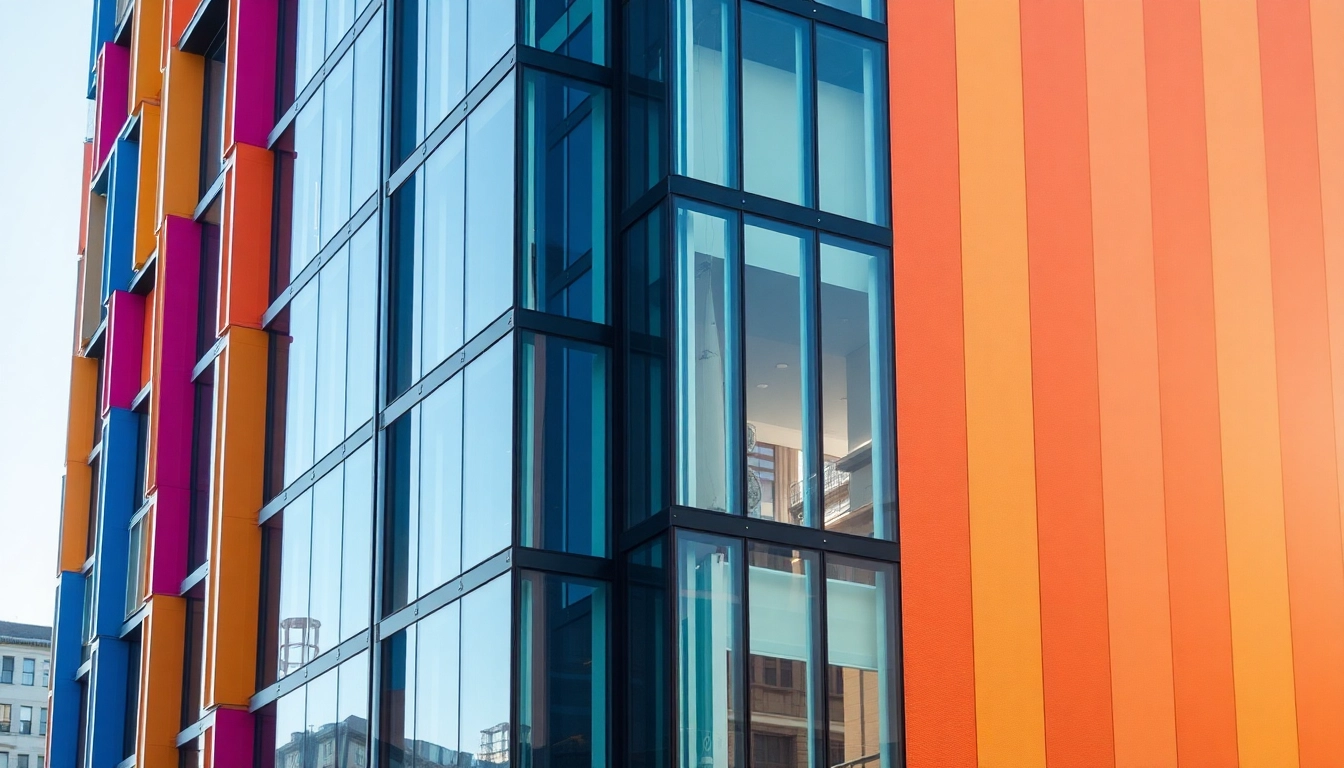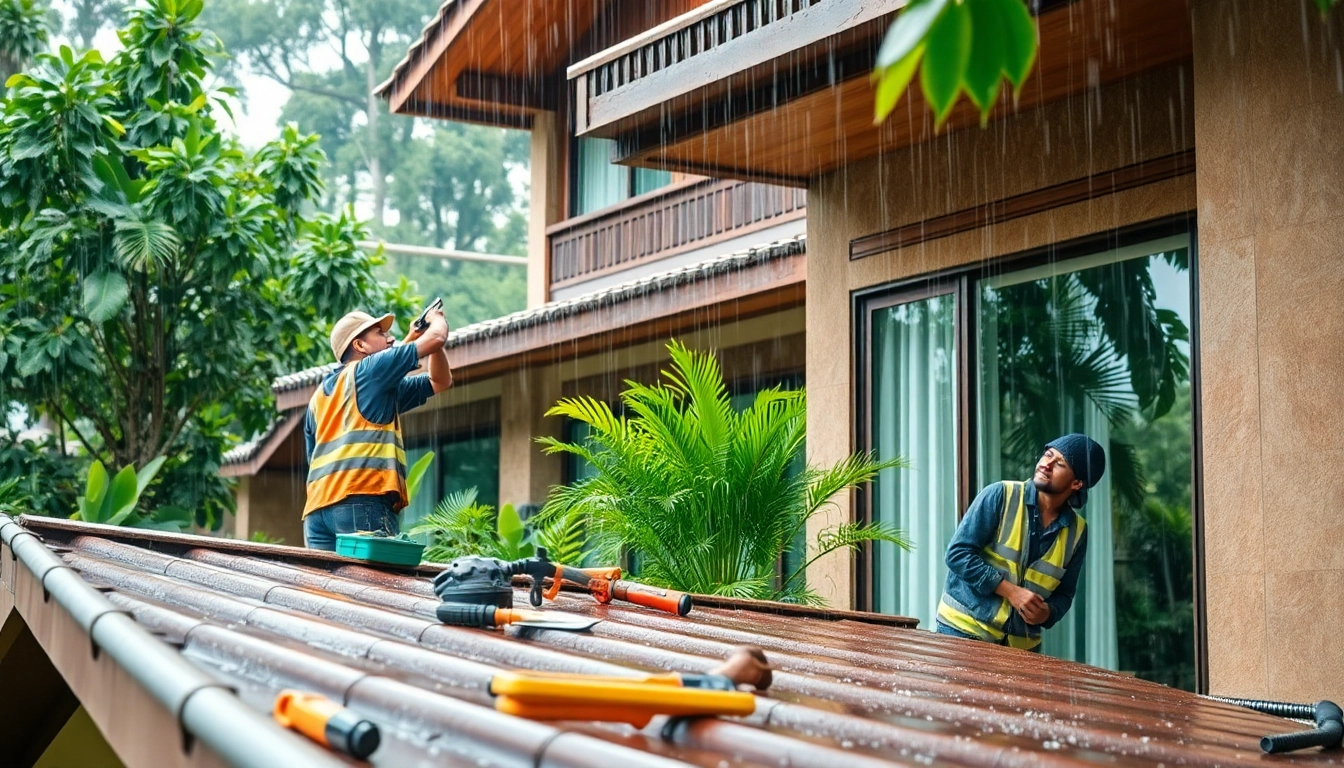Understanding Facade Redesign
What is Facade Redesign?
Facade redesign involves revamping the external appearance of a building. This process can include a variety of modifications, from minor aesthetic changes to significant structural renovations. Essentially, a facade redesign is about improving the visual appeal of a building while often addressing functionality, sustainability, and energy efficiency. It may encompass the integration of new materials, textures, colors, and architectural elements to achieve a desired look and feel. Moreover, facade redesign plays a crucial role in the overall value of a property, enhancing its marketability and attracting potential buyers or tenants. To dive deeper into the world of Facade Redesign, let’s examine its significance further.
The Importance of the Building Facade
The facade of any building acts as its first impression, serving as a critical component of architectural design. It not only protects the structure from the elements but also reflects the style and character of the building. A well-designed facade can significantly increase the aesthetic appeal of a property, enhancing its spatial context within the surrounding environment. Beyond aesthetics, the building facade plays a functional role by controlling light entry, ventilation, and thermal performance, ultimately impacting energy consumption. Moreover, a modernized facade can drive property values higher, making it an essential aspect of real estate investment.
Common Materials Used in Facade Redesign
Facade redesign incorporates a wide range of materials, each offering unique visual and functional properties. Some of the most popular materials include:
- Brick: Known for durability, brick offers a classic aesthetic and excellent insulation properties.
- Glass: Frequently used in modern designs, glass facades create an open and light-filled environment, promoting transparency.
- Wood: Provides warmth and a natural feel; wood can be used in various finishes to suit different styles.
- Metal: Materials like aluminum and stainless steel deliver a sleek, contemporary look and are highly functional.
- Stone: Stone adds a touch of luxury and timelessness, offering both durability and beauty.
Choosing the right material is crucial as it impacts not only the visual aspect but also energy efficiency, maintenance requirements, and long-term performance.
Popular Facade Redesign Styles
Modern Design Innovations
The modern facade design typically emphasizes minimalism, functionality, and sustainability. Innovations such as curtain walls, green roofs, and dynamic shading devices not only enhance the aesthetic appearance but also improve energy efficiency and environmental performance. Such facades often utilize advanced building technologies and systems that allow for better climate control, reduced energy consumption, and integration of renewable energy sources.
Classic vs. Contemporary Approaches
When deciding between classic and contemporary facade designs, it’s essential to consider the surrounding architectural context, the historical significance of the building, and the preferences of modern occupants. Classic designs often include ornate details, symmetrical shapes, and traditional materials that reflect heritage. In contrast, contemporary approaches lean toward sleek lines, open spaces, and the use of advanced materials that challenge conventional norms. The blending of both styles can also lead to unique, hybrid designs that respect tradition while embracing innovation.
Combining Functionality with Aesthetics
A successful facade redesign balances aesthetics with functionality. Incorporating elements such as energy-efficient windows, sustainable materials, and effective insulation strategies not only enhances visual appeal but also makes the building more comfortable and cost-effective to operate. Features like shading devices or retractable awnings can improve light management and reduce heat gain, contributing to lower energy bills while adding to the overall architectural beauty.
Step-by-Step Process for Successful Facade Redesign
Initial Planning and Consultation
The first step in any facade redesign project is thorough planning and consultation. Engaging with architects, designers, contractors, and other stakeholders ensures that the project’s objectives align with the architectural vision and budget constraints. During this stage, factors such as local building codes, environmental concerns, and the preservation of historical elements must be considered. Gathering feedback from potential users and neighbors can also provide insights that influence design decisions.
Designing Your Facade: Key Considerations
Once the planning phase is complete, the focus shifts to designing the facade. Key considerations during this stage include:
- Aesthetic Appeal: The visual impact of the facade is crucial. It should align with the surrounding architecture while presenting a unique identity.
- Material Selection: As previously discussed, the choice of materials can greatly affect both the look and performance of the building.
- Climate Considerations: The facade must respond effectively to local climate conditions, enhancing comfort and energy efficiency.
- Sustainability: Integrating sustainable practices, such as using recycled materials or incorporating greenery, maximizes the environmental benefits.
Final Implementation and Construction Phases
After finalizing the design, the implementation phase begins. This stage involves selecting contractors, acquiring necessary permits, and assembling materials. Effective project management is crucial to ensure that timelines are met, budgets are adhered to, and the quality of work is maintained. Regular inspections during construction can help identify any potential issues early, ensuring that the final outcome aligns with the initial vision.
Case Studies: Successful Facade Redesigns
Residential Facade Transformations
Many homeowners opt for facade redesign to increase curb appeal and property value. For instance, a dated brick facade can be transformed by adding modern cladding materials, new windows, and fresh landscaping. One notable case saw a mid-century bungalow receiving a contemporary facelift with the introduction of large glass panels and bold color contrasts, resulting in a striking transformation that garnered local praise.
Commercial Facade Success Stories
Commercial buildings are increasingly recognizing the importance of an inviting facade. A redesign of an office building in an urban center included replacing the old concrete facade with a vibrant, multi-textured design featuring green walls and modern signage. This not only revitalized the building’s appearance but also attracted new tenants and increased foot traffic to the area, showcasing how effective facade redesign can drive economic benefits.
Lessons Learned from Facade Projects
From various facade redesign projects, several key lessons emerge:
- Engage Stakeholders Early: Involving community members and future occupants in the design process can lead to more relatable and accepted outcomes.
- Plan for the Future: Anticipating future needs and trends can guide smart choices in materials and design.
- Value Aesthetics and Function: A focus on both visual appeal and functionality can yield the best results for sustainability and occupant satisfaction.
Future Trends in Facade Redesign
Sustainable Materials and Practices
As society becomes increasingly aware of environmental issues, the demand for sustainable materials in facade design is on the rise. This trend encompasses using recycled materials, energy-efficient glazing, and biophilic elements such as green walls. These practices not only reduce environmental impact but also contribute positively to the building’s lifetime performance and occupant health.
The Role of Technology in Facade Design
Technological advancements are transforming facade design practices. Tools such as Building Information Modeling (BIM) enable architects to visualize and simulate performance aspects more accurately. Additionally, smart facades equipped with sensors can adapt to environmental conditions, enhancing energy efficiency through automated shading and ventilation strategies.
Predicted Trends for the Next Decade
Looking ahead, several emerging trends are expected to shape facade redesign:
- Responsive Facades: Building facades that can adapt to sunlight, temperature, and weather conditions will enhance user comfort and energy performance.
- Integration of Renewable Energy: Solar panels and wind turbines blended into facade designs will become common, promoting energy independence.
- Increased Use of Greenery: Vertical gardens and green roofs will contribute to biodiversity while improving air quality in urban environments.
In conclusion, facade redesign is not just an aesthetic endeavor but a vital strategy for enhancing building performance, sustainability, and community engagement. By understanding the importance of a well-designed facade and incorporating modern materials and practices, property owners can revitalize their spaces and make lasting contributions to their environments.


